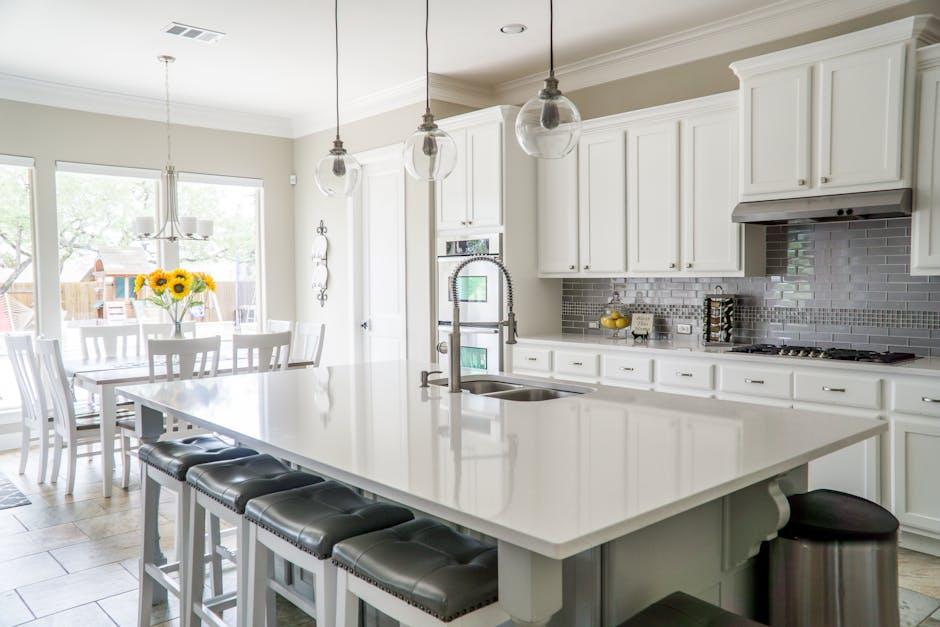In recent years, the allure of luxury homes has captivated affluent buyers, drawn to the promise of expansive spaces, state-of-the-art amenities, and unparalleled comfort. However, beneath the opulent façade lies a critical question: do these sprawling estates inadvertently hinder family bonding? This article delves into the paradox of luxury living, examining whether the abundance of space in high-end residences fosters isolation rather than connection among family members. By analyzing architectural layouts, lifestyle patterns, and psychological impacts, we aim to uncover the nuanced effects of living in grandeur on familial relationships. As we navigate through this exploration, we invite readers to reconsider the essence of home and the intricate balance between space and intimacy.
Impact of Expansive Living Areas on Family Interaction
Moreover, the architectural design of luxury homes often emphasizes grandeur and aesthetics over intimacy. Consider the following factors:
- Room Allocation: Multiple bedrooms and private suites can limit the necessity for shared spaces.
- Technological Integration: Advanced home systems might replace face-to-face interactions with digital communication.
- Design Layout: Open floor plans might not encourage togetherness if the family disperses to different areas.
While luxury homes offer unparalleled comfort, the challenge lies in intentionally fostering environments that encourage family bonding, even amidst vast, beautifully designed spaces.

Architectural Design and Its Influence on Family Dynamics
- Space Allocation: Luxury homes often feature sprawling layouts with dedicated rooms for every conceivable activity. While this can provide a sense of freedom and privacy, it may inadvertently lead to a fragmented family experience. When each family member has their own separate space, such as personal entertainment rooms or secluded home offices, the likelihood of shared activities diminishes. This architectural choice can sometimes transform a home into a collection of isolated zones rather than a cohesive living environment.
- Common Areas vs. Private Retreats: The design of common areas like open-plan kitchens, living rooms, and family rooms plays a crucial role in fostering family interaction. In contrast, the presence of numerous private retreats within a luxury home can detract from these shared spaces. While having a personal retreat can be beneficial for individual relaxation, it may also lead to less time spent together as a family. The balance between communal and private spaces is key, and an overemphasis on the latter can reduce opportunities for family bonding.

Strategies to Foster Connection in Large Homes
- Design Multifunctional Spaces: Transform expansive areas into multifunctional spaces that encourage family interaction. Consider creating a family game room, a cozy reading nook, or an open kitchen-living room concept where everyone can gather naturally. By thoughtfully designing spaces that invite shared activities, families can enjoy quality time together while making the most of their luxurious surroundings.
- Implement Scheduled Family Time: Establish regular family events or rituals to ensure that everyone comes together despite the vastness of the home. This could be as simple as a weekly movie night in the home theater, a cooking session in the gourmet kitchen, or a game tournament in the entertainment room. Consistent scheduling fosters anticipation and strengthens family bonds, turning the grand scale of the home into a backdrop for memorable experiences.
- Utilize Technology Thoughtfully: Leverage smart home technology to bridge distances within the house. Intercom systems, family group chats, or smart speakers can facilitate communication and coordination, making it easier to gather family members from different wings of the home. However, it’s crucial to balance technology use with face-to-face interactions to maintain genuine connections.
- Encourage Outdoor Gatherings: Take advantage of spacious gardens or patios by hosting outdoor activities that bring the family together. Whether it’s a barbecue, a garden party, or a simple evening under the stars, outdoor spaces can serve as natural gathering points that promote relaxation and connection, enhancing the familial experience in a large home.

Balancing Privacy and Togetherness in Luxury Residences
The allure of expansive luxury residences lies in their promise of both opulence and privacy. However, this abundance of space can inadvertently create physical and emotional distances within families. In these homes, personal retreats such as home theaters, gymnasiums, and private studies often become sanctuaries for individual pursuits, sometimes at the expense of shared family experiences. While these spaces offer invaluable personal time, they can lead to isolation if not balanced with communal areas designed for interaction and bonding.
To foster family togetherness, it is essential to intentionally design and utilize shared spaces. Consider integrating the following elements:
- Open-concept living areas: Encourage interaction and visibility among family members.
- Centralized kitchens: Act as the heart of the home, where meals and conversations flow freely.
- Recreational spaces: Create environments for collective leisure activities, such as game rooms or home libraries.
Ultimately, the key lies in striking a harmonious balance between personal privacy and shared experiences, ensuring that the grandeur of a luxury home enhances rather than hinders familial bonds.



